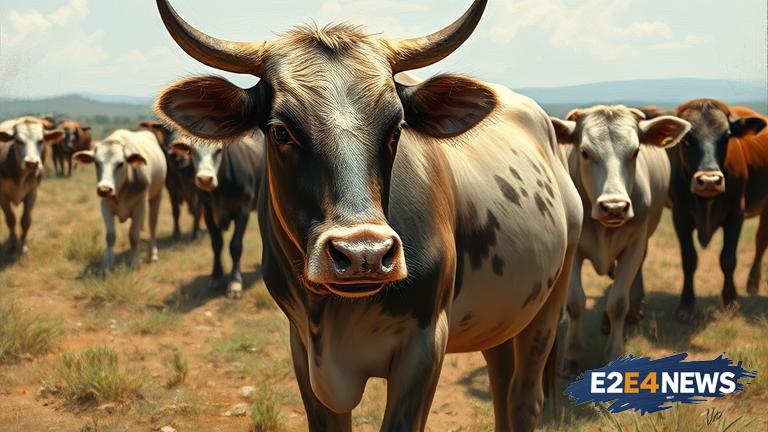The Mexican cattle industry is facing a major crisis due to the presence of a tiny parasite that is ravaging the country’s cattle population. The parasite, known as the cattle tick, is causing significant losses for ranchers and threatening the country’s exports to the US. The tick is responsible for transmitting a disease called babesiosis, which can be fatal to cattle if left untreated. The disease is highly contagious and can spread quickly through a herd, causing widespread illness and death. Mexican ranchers are struggling to adapt to the new reality, with many reporting significant losses and decreased productivity. The parasite is also affecting the quality of the cattle, making them less desirable to buyers. The US is a major market for Mexican cattle, and the parasite is causing concerns about the safety and quality of the imports. As a result, some US buyers are looking elsewhere for their cattle, further exacerbating the crisis for Mexican ranchers. The Mexican government has implemented measures to try and control the spread of the parasite, including the use of pesticides and other treatments. However, these efforts have been met with limited success, and the problem persists. The crisis is not only affecting the cattle industry but also having a broader impact on the economy and communities that rely on ranching. Many families in rural areas depend on cattle ranching as their primary source of income, and the losses are being felt deeply. The parasite is also affecting the environment, as the use of pesticides and other chemicals can have negative impacts on local ecosystems. The Mexican government is working with international organizations and experts to find a solution to the problem, but it is a complex and challenging issue. The use of genetically modified cattle that are resistant to the parasite is being explored, but this is a long-term solution that will take time to implement. In the meantime, ranchers are being forced to take matters into their own hands, using traditional methods to try and control the parasite. This includes the use of natural remedies and manual removal of the ticks from the cattle. However, these methods are not always effective and can be time-consuming and labor-intensive. The crisis is a stark reminder of the importance of animal health and the need for effective disease control measures. It also highlights the interconnectedness of the global food system and the potential risks and challenges that can arise when diseases are not properly managed. As the situation continues to unfold, it is clear that a comprehensive and coordinated approach will be needed to address the crisis and ensure the long-term sustainability of the Mexican cattle industry. The US and Mexican governments will need to work together to find a solution, as well as international organizations and experts in the field. The use of technology, such as drones and satellite imaging, may also play a role in monitoring and controlling the parasite. Ultimately, the goal will be to find a solution that balances the needs of the cattle industry with the need to protect the environment and public health. The crisis is a wake-up call for the industry and a reminder of the importance of prioritizing animal health and disease control. It is also an opportunity for innovation and collaboration, as experts and stakeholders come together to find a solution to this complex and challenging problem.





